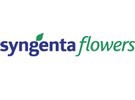Data and tools are strategic requirements in growing crops. Every grower collects and uses data to make sound decisions, also at Syngenta Flowers’ production farms. Crop Specialist Ruud van Zundert shared his story about the greenhouse climate data project with Sigrow. The aim was to improve the growers’ ability to work with data in their day to day decision making with regards to plant-climate relation; simplifying the access of climate data and making it easier to interpret different kind of information.

Ruud: "We noted that the previous system only allowed the access of historical climate data which was then used to attribute previous plant performance and couldn’t assist in making corrections then since climatic conditions vary each day. Therefore, after successful trials, the project team recommended all Syngenta Flowers’ growers to use Sigrow."
Fact based decisions
Since Syngenta started to use Sigrow sensors at their cutting production sites, it improved long-distance communication. They now have data-driven discussions based on facts rather than opinions.

A real eye-opener was the ability to identify greenhouses climate differences on site level and even compare climate between sites in different regions. By striving for equal and uniform climates between the greenhouses, Syngenta will be able to supply customers an even more uniform and consistent quality product.
Patrick Chege, Site Manager Kenya Pollen (KEPO): "With the free Sigrow app, we can access all of the data that Sigrow sensors capture to make smart and informed decisions about our crops. Whether we use the mobile or desktop version, we easily integrate the app with the existing software and effortlessly export data to share with our growing teams. With this growing has been made easy with data-driven decisions at KEPO."
What is Sigrow?
Sigrow is a combination of custom-tailored climate monitoring systems and a software that makes it easier to determine the best climate settings for crops in the greenhouse.
The project team noticed that it enabled:
- Real-time climate data tracking and monitoring; simply accessing climate data whenever and wherever through mobile phone, tablet or computers.
- Monitoring functionality of short-day, long-day, and shading systems.
- Climate data information sharing; useful in the currently on-going Climate & Fertigation Training Academy. - i.e. in the training sessions, the team noted that almost similar plastic roofing material in different localities recorded different amounts of light levels (difference of 20% between two farms) in the greenhouse.
 Syngenta Flowers
Syngenta Flowers